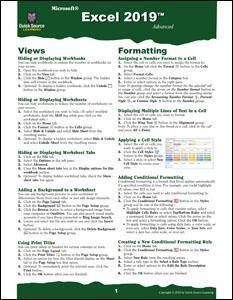Excel is a powerful spreadsheet program that can be used to store, analyze, and organize data. It is an essential tool for businesses and individuals alike, and understanding its fundamentals is essential for using it effectively and efficiently. In this article, we will cover the basics of Excel and how to use it to its fullest potential.
What is Excel?
Excel is a spreadsheet program created by Microsoft that is used to store, analyze, and organize data. It is a powerful tool for businesses and individuals alike, and is used in many different industries. Excel is a great way to quickly and easily manipulate data, create charts and graphs, and perform calculations.
How to Get Started with Excel
The first step in getting started with Excel is to familiarize yourself with the program. You should learn how to create and format worksheets, enter data, and use formulas and functions. You should also become familiar with the different features and tools that Excel has to offer.
Working with Cells and Ranges
In Excel, a cell is a single block of data. Cells can contain text, numbers, and formulas. Cells can be combined into ranges, which are groups of cells. Ranges can be used to quickly perform calculations and manipulate data.
Using Formulas and Functions
Formulas and functions are used in Excel to perform calculations and manipulate data. Formulas are used to perform basic calculations, such as adding, subtracting, multiplying, and dividing. Functions are used to perform more complex calculations, such as finding the average of a range of cells or counting the number of cells in a range.
Creating Charts and Graphs
Charts and graphs are used to visually represent data in Excel. They can be used to quickly and easily compare data points, identify trends, and spot outliers. Excel has a variety of chart and graph types, such as bar charts, line graphs, and pie charts.
Working with Tables
Excel tables are used to organize and store data in a structured format. Tables make it easy to sort and filter data, as well as quickly perform calculations. Tables can also be used to quickly create charts and graphs.
Working with Pivot Tables
Pivot tables are used to quickly analyze large amounts of data. They make it easy to quickly summarize data and create charts and graphs. Pivot tables can also be used to quickly identify trends and spot outliers.
You might find these FREE courses useful
- Excel والمخططات المتقدمة فى Pivotاستخدام جداول و مخططات ال
- التنسيق في مايكروسوفت إكسل | Formatting in MS Excel
- Build Critical Path Visualizations in Tableau
- Everyday Excel, Part 3 (Projects)
Working with Macros
Macros are used to automate repetitive tasks in Excel. They can be used to quickly perform calculations, format worksheets, and create charts and graphs. Macros can save you time and make your work more efficient.





